Smart cards: 'Smarter than ever' - but are they better?
- Published
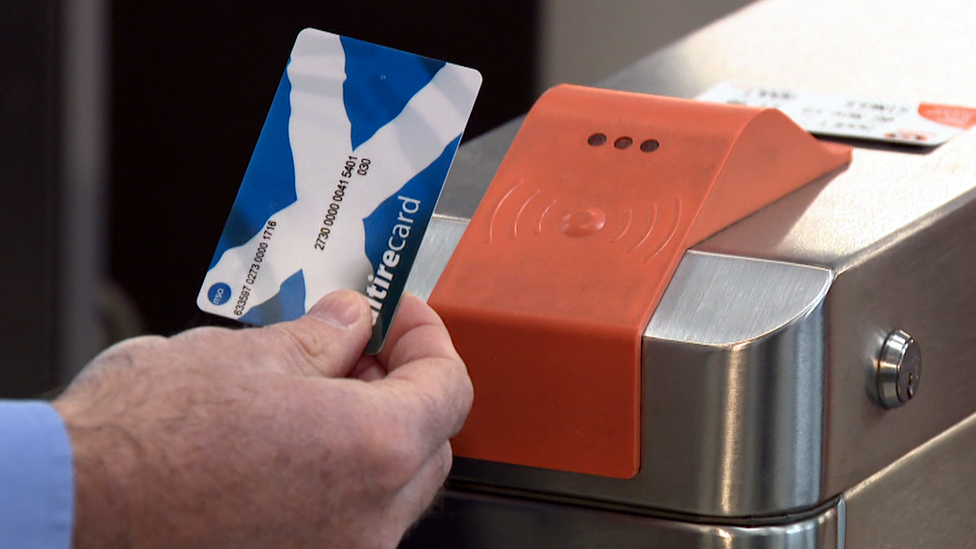
Commuters can now use any smartcard on smartcard readers in Scotland
Smartcards for public transport are now "smarter than ever" - but what does that mean, and how will it affect commuters?
Smartcards have been around for a while. You might know someone with a National Entitlement Card, which lets them use public buses for free.
You might have heard of Oyster, Dundee Xpress or the Scotrail card. These are all "smart", which means they have a small computer chip in them.
You can load money or personal details onto them, like a bank card.
So what has changed? And will it make public transport in Scotland more accessible and, crucially, cheaper?
What's changing?
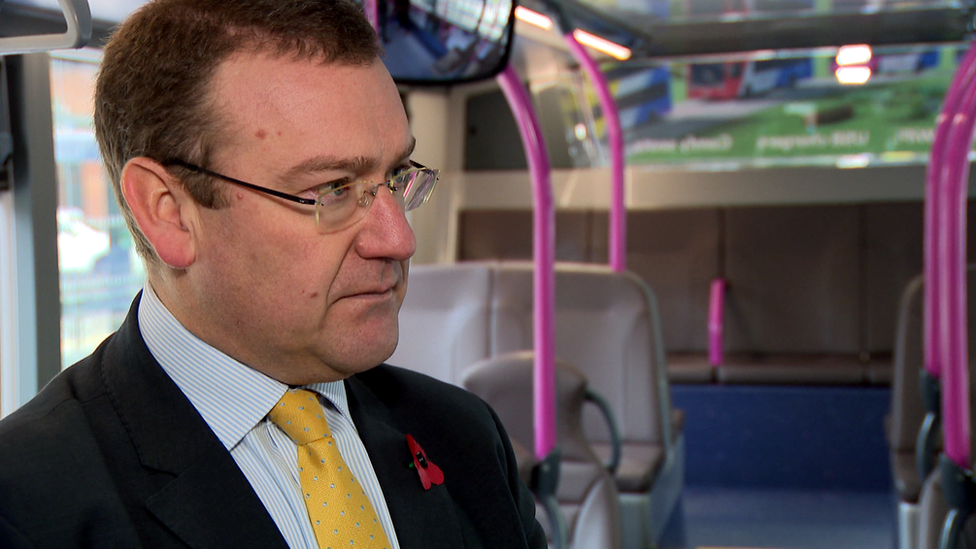
Andrew Jarvis says the new system will allow operators to cooperate on tickets and prices
There are 16 different smartcards in use in Scotland, and until today they only worked on one mode of transport.
If you wanted to travel from Edinburgh to the West End of Glasgow, you could use a Citysmart card to get the tram to Waverley train station, a Scotrail card to Queen Street and then a Bramble card for the subway to Hillhead.
Now, you should be able to use one card for all those journeys.
But this is a technical change. Andrew Jarvis, managing director of First Bus, said that passengers are "probably not going to notice a difference right away."
"This is all aligning the technology behind the scenes. It means that products can be loaded on any other operators card," he said.
Is it really that different?

Michael Matheson says bringing the operators together has been "a challenge"
Tickets that work on different operators and modes of transport are also not new in Scotland.
Zonecards have been around for a while, and let users travel on almost all public transport within a defined area.
But Zonecards are a single type of ticket. Smartcards are able to load many tickets and can also handle money.
Transport Secretary Michael Matheson explained: "Part of the challenge we've had in Scotland is that we have so many different operators. So for example, on the bus network alone, we have over 200 different operators, many of whom are using different forms of technology."
This is about bringing together the different bus, train, subway and ferry companies to make sure they're using the same technology.
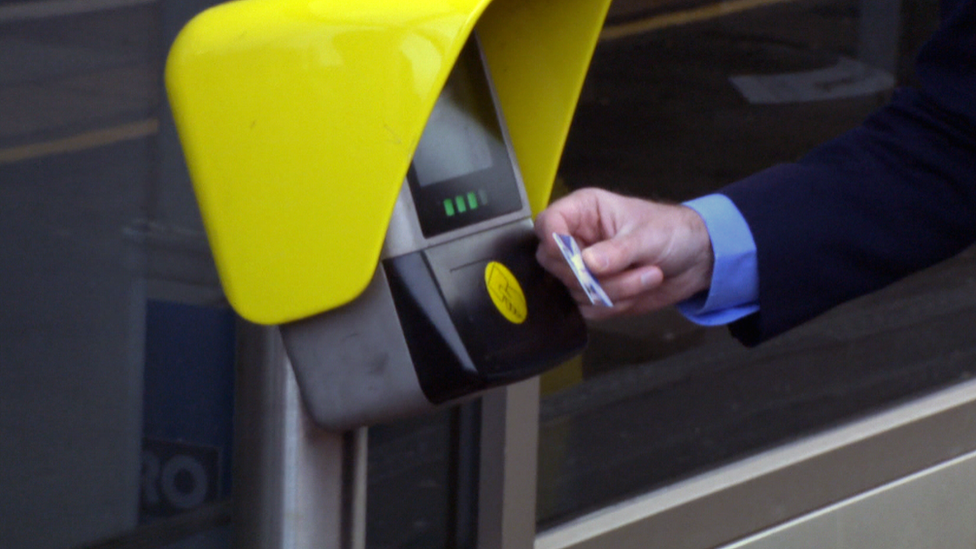
These Scotrail card readers will now accept other smartcards, such as the subway Bramble
Is this any better?
It's not clear how much commuters will benefit at this stage.
There isn't any new smartcard being issued and ticket prices haven't changed.
Passengers won't see "an immediate, sudden launch of a product next week that's going to change their lives," said Andrew Jarvis.
It does mean Scotland's fragmented transport system has become less fragmented, which could make future changes easier to manage.
Will there be a fare cap?
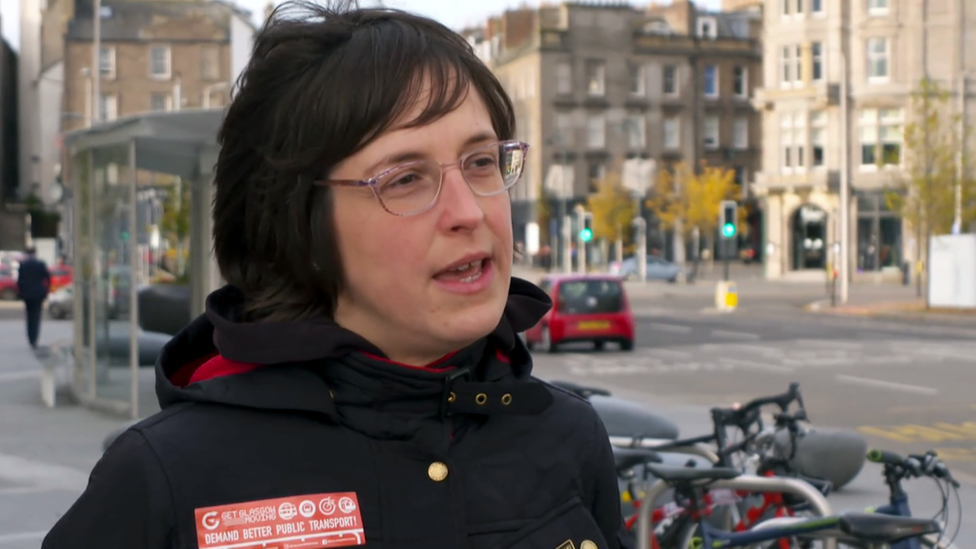
Ellie Harrison wants more regulation alongside a fare cap
Now that all the different operators' systems work together, how can customers know they are getting a good price? It is still a complicated market, where different travel companies charge different fares.
Ellie Harrison, Chair of the Get Glasgow Moving campaign, said: "It sounds like from these proposals that each operator will be able to charge you for each separate journey. Therefore, you're going to be racking up a huge bill."
Ellie Harrison is campaigning for a fare cap, which would limit the amount a customer could be charged within a certain time. In London, there is a cap that works daily and weekly.
First Bus has introduced a similar system in Aberdeen, but it only works on First Buses.
Because Scotland has so many different private transport operators, getting them all to agree to a fare cap could be a big challenge.
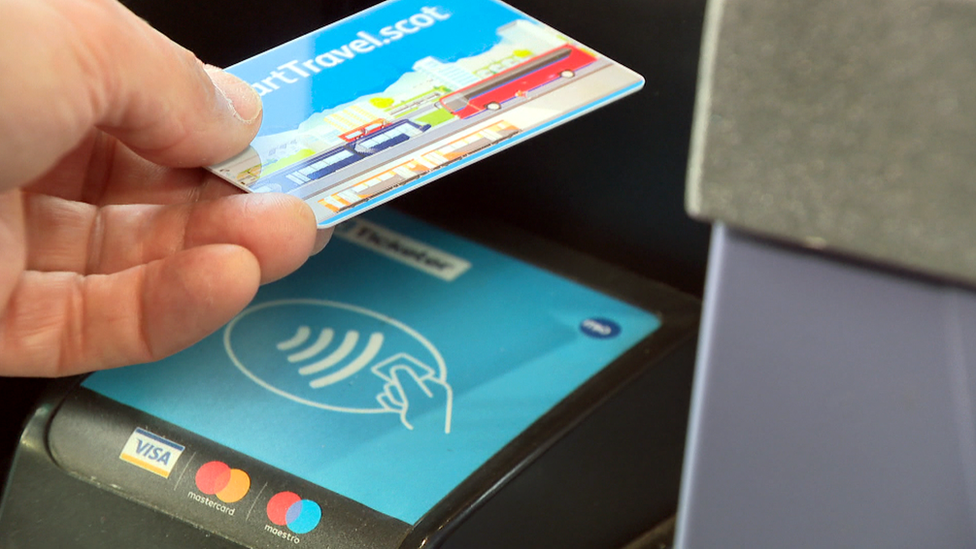
Transport for London introduced its smartcard, the Oyster card, in 2003
Michael Matheson said he will be looking into improvements such as capping fares, but questions remain over how such a system could work without serious changes in Scotland's transport system.
It's not clear how a cap would be calculated. For example, would operators agree to take passengers who had already reached their cap by travelling on a rival operator? And how could that cost be spread between operators?
But Andrew Jarvis said he doesn't necessarily see the train or subway as rivals, pointing to the Zonecard as evidence of their ability to compromise.
"The competitor is really the car," he said.